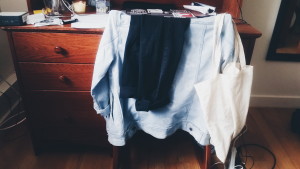
Womanspirit is a feminist publication that is made up of collections of short-stories, poetry, manifestos, and essays written by women who were part of a creative and political community that centralized spirituality in anti-oppression work. Their statement of philosophy emphasizes the interconnectedness of social justice, spiritual empowerment, and self-determination. Each piece in the publication is concerned with spirituality as a crucial component of structural anti-oppression work and interpersonal healing and community building. Women offer up spells and rituals in their writing as a mode of imagining new possibilities for collective liberation and as a practice of healing and tending to intimate concerns around relationships between women — which include mother-daughter relationships, romantic partnerships, friendships etc.
In a poem titled “Full Moon Ritual”, the author explores the concept of self-making through nature. The moon serves as a symbol of feminine power and as a source of light and energy. Divinity, nature, and womanhood are linked in their life-giving force; a force that fosters utopic imaginings of liberation and collective joy. The moon, in its cyclical rhythms and “distinctive patterns”, parallels the cycle of menstruation, symbolically linking the life-giving cycles of womanhood and nature.
Our power is for creation and recreation of our
lives, of the world,
of life as we live it day to night, night to day
Nature, in its fecundity, is the source of (re)creation and constant rejuvenation. The feminine imagination offers similar possibilities of (re)creation in its life-giving force. “We have the power to create a rebirthing of our own”. I take this to mean that in activating the feminine impulse through creation, we can attain a state of renewal. For me, this feminine impulse and imagination is not one that is bound to corporeal conceptions of menstruation and reproduction, but that also extends to the imaginative realm of creation. Shange’s literature utilizes this feminine impulse to create narratives that gives voice to our memories and hopes. Literature that mobilizes this impulse offer us the opportunity to imagine and (re)create the world according to principles of collective liberation and empowerment.





